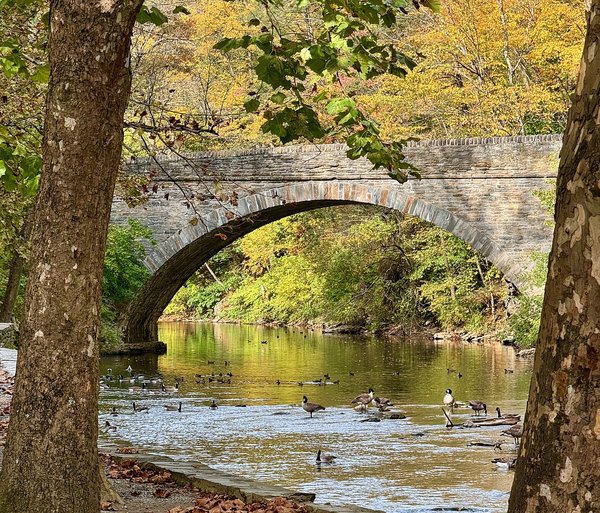Two stone bridges that cross the Wissahickon Creek in Northwest Philadelphia will be rehabilitated to help them withstand increased flooding that's expected to result from climate change in the years to come.
A $14.2 million federal grant has been awarded to the city to make repairs to the Bells Mill Bridge and Valley Green Bridge, both of which were built about 200 years ago and are rated in poor condition.
- MORE NEWS
- HonkyTonk country music bar to open on Wildwood boardwalk on May 10
- Drivers with illegally tinted windows can be fined $100 under new Philly law
- Tun Tavern, birthplace of the Marines, to be reconstructed in Old City
Bells Mill Bridge crosses the creek in the area of the Wissahickon Environmental Center, west of Germantown Avenue, and serves as a vital route to Chestnut Hill Hospital. The two-lane road has a crosswalk for Forbidden Drive, the seven-mile trail whose upper parking lot is just west of the bridge.
The Valley Green Bridge, about three miles south, crosses the creek within Wissahickon Valley Park and is along one the city's most scenic paths for pedestrians and cyclists.
The work on both bridges is expected to take four years, including two years for designing the two projects, city officials said. The Bells Mill Road bridge will have one of its two lanes closed but will remain open throughout construction. The Valley Green Road bridge will be closed to vehicles through the project but will remain open to pedestrians and cyclists.
The grant comes from the federal PROTECT program, part of the 2021 bipartisan infrastructure law that has awarded $829.6 million for projects that address climate threats in 37 states. The program offers money to fix roads, bridges, ports, rail and other transit routes that are vulnerable to flooding, erosion and other natural forces.
Elsewhere in Pennsylvania, PennDOT is getting a $6.7 million grant to increase the height of a floodwall along Pittsburgh's Interstate-376, which often sustains flooding by the Monongahela River. In Delaware, a $1 million project will improve flood resilience on a highway underpass beneath I-295 and a $15 million project will enable the department of transportation to raise State Route 9 at Taylors Bridge, which has had access limited by sea level rise. New Jersey is not among the states where grants were awarded.
In Philadelphia, where climate change is creating a warmer and more humid environment, the most significant and growing threat to infrastructure is flooding caused by more frequent, heavier rainfall. The city has had to strategize about high-risk areas that will be increasingly vulnerable in the coming decades.
In Southwest Philly's Eastwick neighborhood, another flood-prone area, the U.S. Army Corps of Engineers is working with the city to plan a 1,400-foot levee along Cobbs Creek to protect the surrounding community. The nearby Philadelphia International Airport, which is susceptible to tidal flooding from the Delaware River, faces a dilemma over the goal of expansion and the need for resilient infrastructure.

